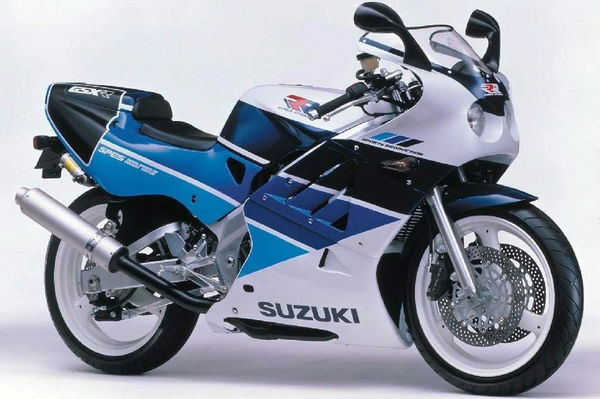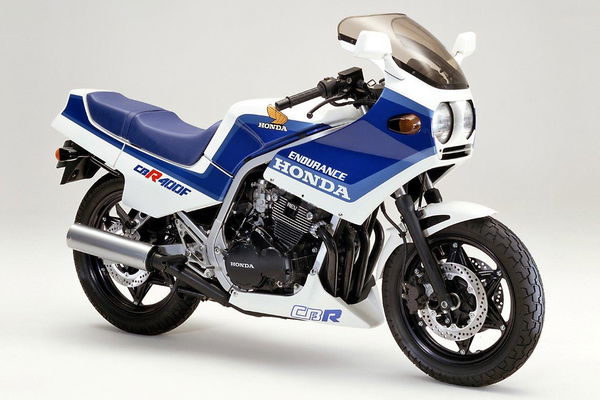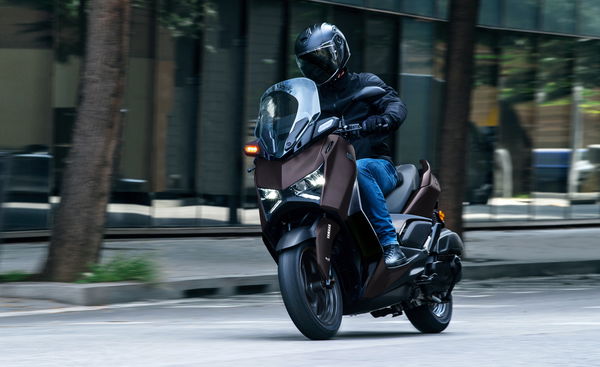Top 10 'grey' import motorcycles
This is it; the 10 best motorcycles that never officially made it from Japan to the UK

THIS is part two of our two part series on the best motorcycles that never 'officially' made it to the UK.
You can see our countdown from 20th-11th here. Our countdown from 20 looks liked this:
20: Honda CBR400RR, 19: Honda VTR250, 18: Honda CBR400F Endurance, 17: Suzuki GS1200SS, 16: Yamaha SDR200, 15: Honda Hornet CB250F, 14: Suzuki GSX750S Katana, 13: Suzuki GSX-R, 12: Yamaha SRV250 Renaissa, 11: Honda Dream 50 AC15.
And in at number ten...
��
10: Honda CB400 Four NC36
NOT to be confused with either the earlier CB400F, the CB-1 (NC27) or the CB400 Super Four (NC31, NC39 and NC42 over the years), the CB36 is another bike that had a brief life in the nineties but presaged a future trend. Despite modern running gear, it was a well-created homage to the original CB750, right down to the four exhausts, two stacked either side. But it mixed in a few modern cues, like a slightly less delicate stance than the original CB, and as such its close to being a forebear to the current CB1100F. The bike’s short life suggests that Honda’s move to the retro theme was a decade to early, but today the NC36 makes an appealing combination of modern technology and retro styling, with a useful 52bhp into the bargain.
9: Suzuki GSX400X Impulse
WE’VE included some bikes in this list because they’re good to ride. Others because they look great. The GSX400X is here because it looks, well, like nothing else. It’s like Suzuki took the Katana – already a fairly wacky-looking creation – and said “let’s make it weirder”. Presumably this sort of thing happens in bike firms a lot but we’d guess that 99 times out of 100 the board simply sends the drawings back to the design office, probably with a stern note telling the originator to buckle down and do some real work. The styling is a combination of 1980s boombox futurism combined with a hint of Isambard Kingdom Brunel. Even the instruments are odd-looking. But now it’s just so 1980s that it’s cool. Sort of.
Spec-wise, it’s largely GSX-R400, with around 58bhp at 12,000rpm and a weight of 153kg. But it probably doesn’t matter, because the Impulse is all about the styling. Made only in 1986, along with a slightly less odd half-faired XS version, they’re few and far between now.
8: Yamaha R1-Z
WOAH-THERE. An R1? Well, no. The R1-Z has nothing to do with the later YZF-R1 – instead it’s more like an RD350LC brought kicking into the 1990s.
Like so many of the bikes here, it was short-lived, appearing in 1991 and fading away soon after. It combined the TZR250’s two-stroke parallel twin with naked styling and a part-steel-trellis, part-aluminium frame that came way before such designs were fashionable. It’s a café-racer, but not retro. A naked sports bike but without a faired equivalent. It’s hard to categorise but slots firmly into the ‘want one’ class. Restricted to 45bhp – although there probably isn’t much more to be had – that engine has just 133kg to propel and a proper two-stroke power band. The chassis looks like it should be capable, too.
7: Yamaha FZR250R
LOOKING just like a miniaturised OW-01 and screaming up to 18,000rpm and beyond the FZR250 is another of those oddballs from the period when every Japanese manufacturer was intent on seeing just how small they could make a four-cylinder sports bike. There’s little to choose between the Yamaha and its rivals – the CBR250RR, Kawasaki ZXR250R and the GSX-R250 – but if you’ve never ridden a four-cylinder 250, it’s worth hunting one out just for the experience. It takes a little while to acclimatise to the revs and insanely low gearing – if you’re used to a ‘normal’ bike you’ll probably think the clutch is slipping when you first pull away – but the noise and drama will soon make you forget that, actually, you’re not going very fast.
6: Honda GB500TT
LAUNCHED back in 1985, the GB500TT was intended to be a ‘retro’ bike long before there was much appetite for that sort of thing – it’s crazy to think that now, at nearly 30 years old, it’s a classic in its own right. The engine, a 40bhp 498cc single, might not have quite the right look to pass as a real 60s café racer, but otherwise the TT’s appearance is bang-on. It sold well in Japan, along with the GB400TT in either two-seat or single-seat, bullet-faired form.
5: Honda CBR250RR
IF the Hornet 250 is a friendly little critter, the CBR250RR is its feral cousin – sharing much of the same DNA, but very different in reality. We all know that in Japan, the more Rs you add to a bike’s name the more racy it is, so the fact the CBR250RR has three more than the Hornet reveals much about its nature. Remember how we said the Hornet had a conservative red-line? Well in CBR-RR form, the same basic engine design can hit 20,000rpm, giving 45bhp – enough to match a similarly-aged NSR250R two-stroke. The CBR250 had a 10-year life, starting out in 1986 as the ‘F’ (MC14) with jellymould styling like the original CBR600 and ending a decade later as a mini-Fireblade, complete with two extra Rs on its name. But it flattered to deceive – the first gen was actually more powerful and lighter than the last. The sweet spot was bang in the middle, around 1990-93, with the full-power MC22 version.
4: Honda VFR400R NC30
STRICTLY-speaking the VFR400R, at least the NC30 version, wasn’t a pure ‘grey’ import – a handful were officially sold in the UK at the sort of price that explained why they weren’t brought over in bigger numbers. New, they cost more than a CBR600F and while the alloy frame and RC30-derived styling and mechanical layout was persuasive even back in 1989 a CBR600F would out-drag one with ease. But the reality is that if you find a VFR400 – whether it’s an NC30, NC24 or NC21, or the RC45-alike RFV400R NC35 – it’s a 99% certainty that it will be an import. While all the VFR400s are great, the NC30 is a favourite thanks to the RC30 styling and high-end (for the late 80s) components. Probably the UK’s favourite grey import, the VFR is almost too familiar to make this list, but it’s too good to leave out.
3: Honda NSR250R
OK, let’s get one thing straight. If all you want is a great two-stroke sports bike, you’ll be better off with a decent, UK-market RGV250 or Aprilia RS250. But if you want the most exotic 250 two-stroke, the MC28 NSR250 is where it’s at. That single-sided Pro-Arm suspension. The very fact that you used a ‘smart card’ for the ignition – even though that very system means it’s a bitch to derestrict (hopefully if buying a bike now it will already be derestricted and have the legendary ‘HRC’ smart card to release more power). For simpler derestriction, opt for the similar-looking but older MC21 version. The best of the best, though, has to be the limited-edition MC28 NSR250SP made in 1996 with Repsol paint.
2: Suzuki GSX-R250R SP
WE’VE already covered a couple of crazy 250cc four-cylinder four-strokes, but of them all the GSX-R250R SP has got to be the most desirable. It’s that ‘SP’ bit that does it. It was applied to some of the 1989 bikes, which already stand out thanks to their distinctive nose styling with deeply-recessed lights, to which the SP added a single seat and adjustable suspension. While making only 45bhp, in line with Japanese law for 250s at the time, the bike weighed only 143kg. Rare, great to look at and with one of those miraculously miniaturised 250cc engines, what’s not to like?
1: Yamaha RZV500R
YOU only have to glance at a few classifieds to see that the short-lived 500cc two-stroke sports bikes of the 1980s have long since taken off, price-wise. Whether it’s an RG500, an RD500 or even an NS400R, you’ll have to dig deep to get one. But all those official UK bikes have nothing on the Japanese-market Yamaha RZV500R.
At a glance, you might be hard pushed to tell the difference between a UK market RD500 and a Japanese RZV500R, apart from the badge. But look closer and you’ll spot that the Japanese bike has a hand-made, welded aluminium frame where the mass-production Brit-spec bike gets a lump of steel. On the downside, the Japanese bikes were down by around 25bhp on UK versions – 63bhp vs 88bhp – but swapping a few parts soon remedies that, leaving the best of both worlds. The only problem? RZV500Rs now cost a fortune…











